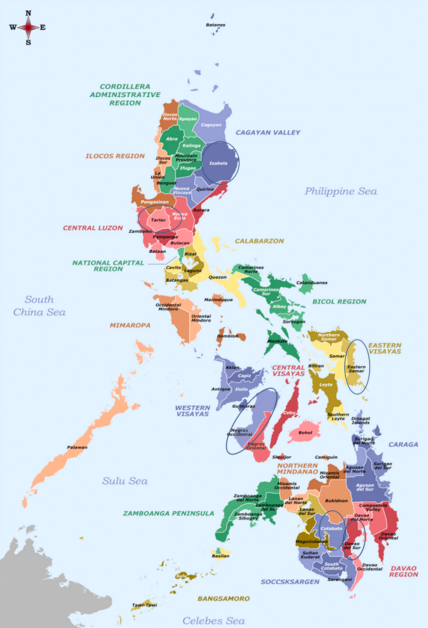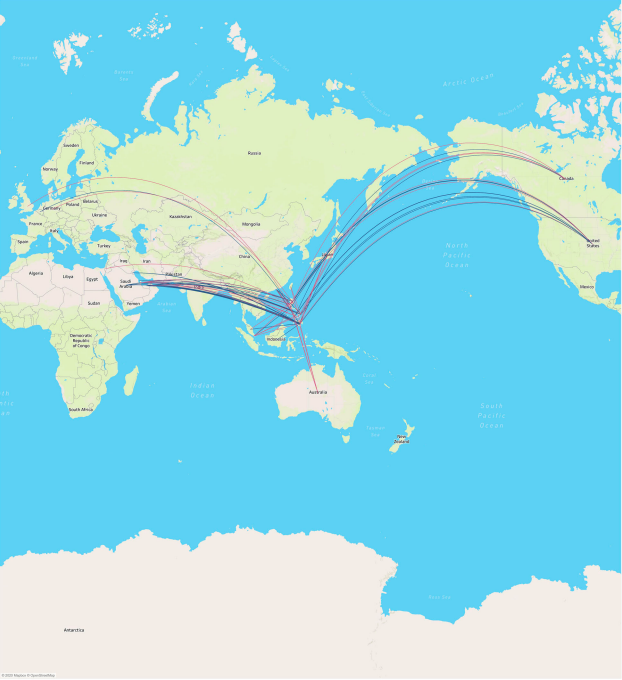Island Stories: Mapping the (Im)mobility Trends of Slow Onset Environmental Processes in Three Island Groups of the Philippines

Introduction
There is an immediate lack of people-centred empirical evidence investigating how slow onset events influence human (im)mobility across the globe. This represents an important knowledge gap that makes it difficult for climate policy to safeguard vulnerable populations (whether on the move or left behind).
Slow onset events will have longer-term effects on the AsiaPacific region overall and pose challenges for people in the Philippines. For example, sea level rise in some parts of the country could reach ~20 cm by the end of the 21st century which is more than the global average. Slow onset processes can also erode people’s ability to move, or people may choose to stay despite of them.
In this study, 48 qualitative focus group discussions in the Philippines elaborated around people’s (im)mobility pathways in the context of slow onset events. The selected collective storytelling approach effectively mapped out the (im)mobility trends of 12 different origin- and destination locations involving the perceptions of 414 women and men across six provinces on Luzon, the Visayas and Mindanao islands. The wholesome research picture also includes narratives from people with a desire to leave, people unable to escape as well as people who wanted to stay behind despite the changing climate.
This weADAPT article is an abridged version of the original text, which can be downloaded from the right-hand column. Please access the original text for more detail, research purposes, full references, or to quote text.
Methodology
Study area selection
Local experiences of how slow onset processes contribute to mobility and immobility can help policy better support those moving, hosting and left behind. The research locations are equally distributed across three major island groups of the Philippines; Luzon, the Visayas and Mindanao. The study selection process ensured that the origin sites were exposed to gradual slow onset environmental processes that people had expressed concerns around. The environmental stress in the origin sites was acknowledged to be one of the drivers of the seasonal, temporary and permanent migration extending from the locations. The selected locations had also been ranked as moderately to very highly vulnerable by a government-led vulnerability assessment.
Qualitative research design
The qualitative research design was built around storytelling research tools that considered psychosocial subjective understandings of climate and (im)mobility perceptions. In total, 414 participants whereof 204 women and 210 men took part in the 48 research sessions. 24 of the sessions were conducted in origin sites and 24 in destination sites. 16 of them were conducted in Luzon, 16 in the Visayas and 16 in Mindanao.
Four sessions were conducted in each study site as the research design included two separate mapping activities. The first session aimed to collectively map out the migration destinations while the second drew out the mobility enablers and constrainers. When the group felt that the map was representative of the movements and translocality of their homes, or included all relevant enablers and constrainers, the conversation moved onto capturing the contextual values of the destinations, the reasons for why people moved to these areas, as well as personal examples explaining how people felt enabled or constrained in their mobility.
Results
In this result section, we present the key narratives coming out of the collective research sessions structured around the geographical study destinations. The thematic narrative analysis also clearly illustrated how the diverse history, social and political context of the three island groups strongly influenced the enabling and constraining (im)mobility factors. We start with presenting key research findings linked to international (im)mobility, and thereafter move onto the three island groups’ migration destinations, translocality, and (im)mobility storylines.

Refer to the results section in the journal article to explore and compare the migration patterns and narratives of Mindanao, the Visayas, and Luzon.
Lessons Learned and Conclusions
In this study, climatic changes mainly acted as drivers of movements from rural areas through livelihood, health and wellbeing pressures. This was because people often tended to natural resource-based livelihoods, such as agricultural, livestock and fishing activities, that were more directly impacted by the environmental stress. The slow onset processes would induce poor and reduced harvest produce through declining soil quality. Climate-induced crop, livestock or fishing loss could also lead to debt and food insecurity over time.
An important contribution of this study, is the way that the migration routes and translocality maps clearly indicate where, geographically, support is needed, and what kind of assistance is required in the origin as well as destination locations based on people’s (im)mobility experiences. Additionally, childhood migration experiences (e.g. parental abandonment by a mother most often) proved to be acting as an immobilising factor as these children grew up they felt like they didn’t want to or couldn’t migrate and leave their children.The environmental migration literature has for decades argued against alarmist media propaganda that indicate that climate change will lead to ‘large scale mass migration’ across national borders. The empirical insights from this study made it clear that the international migration aspect had to be acknowledged as it interlinked with how people (those migrating and left behind) managed to cope with the environmental stress. This does not imply that international migration is more important or widespread than internal movements. It is however important to put this migration trend into wider political and historical contexts as it is clear that movements abroad require access to legal and financial resources that many people do not have.
We also put forward the following three policy recommendations that are informed by key conclusions from this study:
- A national climate change and human (im)mobility policy framework would provide national, regional and local authorities with a stronger mandate to support migrants as well as people left behind.
- Agriculture was identified as a neglected key sector that engaged most climate-induced migrants. Therefore, an increased financial and political prioritisation of the agricultural sector could help ensure financial stability to many of the vulnerable and marginalised groups in rural areas who felt forced to migrate.
- Increased regional development and investment can help balance and improve the sustainability of the internal migration.
It is clear that enhanced international and national governance and social protection measures are important to protect vulnerable people on the move from dangerous labour and living conditions. Meanwhile, livelihood assistance and adaptive support of farmers and fishermen could help people avoid debt, poverty, illegal activities and forced migration. More empirical evidence on the longer-term and wider impacts of slow onset environmental processes are needed to better tailor and target support packages and policy assistance.
Suggested Citation:
Ayeb-Karlsson, S. and Uy, N. (2022). Island Stories: Mapping the (im)mobility trends of slow onset environmental processes in three island groups of the Philippines. Humanities and Social Sciences Communications,9(60), pp.1-18. https://doi.org/10.1057/s41599-022-01068-w
Related resources
- Migration, environment and climate change: Responding via climate change adaptation policy
- Migration for Adaptation: A Guidebook for Integrating Migration and Translocality into Community-Based Adaptation
- Health and migration in the context of a changing climate: A systematic literature assessment
- Relocation as an adaptation strategy to environmental stress: Lessons from the Mekong River Delta
(0) Comments
There is no content